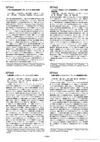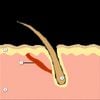Search
for
Did you mean cell membrane complex?
Learn
4 / 4 resultslearn Ketoconazole
antifungal with some anti-androgenic benefits, often used as a shampoo
learn Biotin
supplement to help with hair texture and quality
learn Minoxidil
An essential vasodilator with some anti-androgenic effects, has excellent safety record
Research
5 / 1000+ results
research The Cell Membrane Complex: Three Related but Different Cellular Cohesion Components of Mammalian Hair Fibers
The cell membrane complex in mammalian hair has three distinct types with different structures and chemical properties.

research Histochemical Observation of the Cell Membrane Complex of Hair
The Cell Membrane Complex in hair has both water-attracting and water-repelling layers.
research A Novel Method for Visualizing Hair Lipids at the Cell Membrane Complex: Argon Sputter Etching/Scanning Electron Microscopy
The method shows how hair lipids form specific patterns and their roles in hair structure.
research Hair Pores Caused by Surfactants via the Cell Membrane Complex and a Prevention Strategy through the Use of Cuticle Sealing
Surfactants damage hair, but sealing the cuticle can prevent this.

research Change of Cell Membrane Complex of a Hair Fiber Caused by Hair Damage
Chemical treatments damage hair more than UV exposure, making it thinner and less flexible.
Community Join
5 / 45 resultscommunity 2 months apart, Are these bumps follicles?
The user is using a mix of supplements, including Minoxidil, to address androgenetic alopecia and is concerned about zinc dosage potentially causing issues. They plan to discuss their treatment and supplement regimen with a dermatologist.
community Why do people here trust Kevin Mann?
Concerns about finasteride's side effects on neurosteroids and brain health, with skepticism towards Kevin Mann's advice. Users discuss using finasteride, minoxidil, and RU58841 for hair loss, with mixed opinions on their safety and effectiveness.
community Physio-metabolic method of treating androgenic alopecia. Cold receptors. The relationship between DHT, cold receptors, minoxidil and antiandrogens.
A method for treating androgenic alopecia using minoxidil, antiandrogens, exercise, and cold exposure to promote hair growth. Environmental factors and lifestyle changes, like diet and exercise, can improve treatment effectiveness.

community Physio-metabolic method of treating androgenic alopecia. Cold receptors. The relationship between DHT, cold receptors, minoxidil and antiandrogens
Treating androgenic alopecia with minoxidil, finasteride, and antiandrogens, alongside exercise, cryotherapy, and natural substances to stimulate cold receptors for better hair growth. The method focuses on enhancing treatment effectiveness by considering environmental and behavioral factors and the role of cold receptors and muscle stress.
community Dutasteride takes 1-3 months to work in the scalp. Not weeks. Be careful.
Dutasteride takes 1-3 months to affect scalp DHT levels, not just a week. The prostate absorbs Dutasteride faster than the scalp due to different vascular networks and enzyme densities.